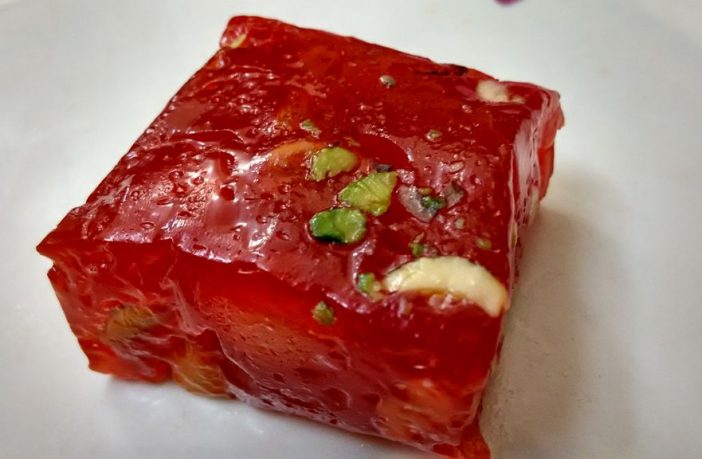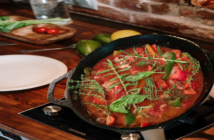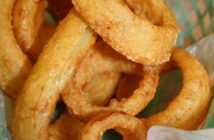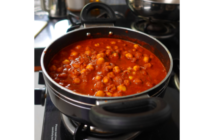It just keeps getting better. My last article touched upon a Western confection in the form of a Chocolate Fudge recipe. This time round I preferred to attempt an Indian one. What better an experiment than the famous Bombay ka Halwa! If you can’t enjoy it owing to sweets shops being locked down, go on and fetch some custard powder, sugar and clarified butter and attempt this Bombay Halwa recipe.
The highlight of this recipe is that if the outcome doesn’t turn out perfect, there is a way of correcting it. In my notes at the bottom of the article, you will find how to retract a poorly turned out halwa should it be too runny for comfort. So, take heart and go about following this recipe with aplomb.
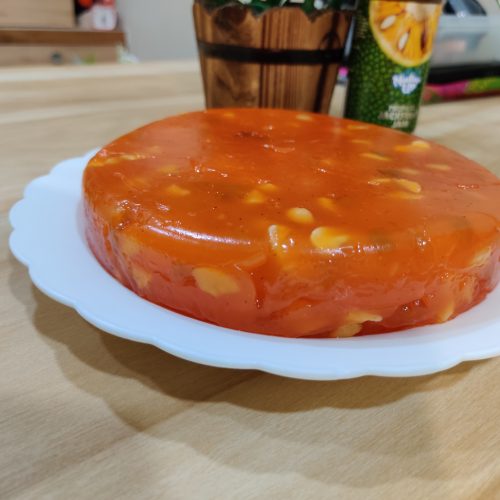
Bombay Halwa Recipe
Ingredients
- 1 cup corn flour (or custard powder)
- 2 cups grain sugar
- 2 tsp lime juice
- 3-4 tsp ghee
- 3 cups water
- A pinch cardamom powder
- A pinch yellow food colour (or orange food colour)
Instructions
- Grease a round baking tray with ghee, taking care to cover the bottom and sides of the tray well.
- Place a pan with sugar and lime juice on a low flame. Bring to a boil till syrupy (or till a 2-thread consistency). See the note below (at the far bottom of the article) for a tip on ascertaining a 2-thread consistency. Don’t fret if you can’t get it, as it needs to be light and syrupy unlike that required of a 1-thread syrup.
- Remove from the stove and keep aside.
- Separately take the custard powder (or corn flour) in a non-stick vessel, add all the water and stir until there are no lumps.
- Turn on the heat, on a low-medium flame. Pour the diluted custard/cornflour slurry in a pan and place the pan on the stove. Stir continuously until the mixture turns thick. Add food colour at this stage and stir in the sugar syrup – in small batches. Don’t add the syrup all at one go as it won’t achieve the jelly like consistency required of a Bombay ka halwa. If you can’t figure out how jellified it must get, use a timer to cook for around 15 minutes on medium-high flame. Don’t stop stirring constantly, an exercise that pays off till its glutinous end.
- Add cardamom powder, and 3-4 tsps of ghee – one tsp at a time – cooking on medium heat and stirring continuously. When it achieves the required gooeyness, remove from the stove and pour the mixture into the pre-greased tray.
- Let cool, for say a half hour (or less) using your discretion. Run a thin knife around the inside edges, place a flat dish over the container and overturn it adroitly. When you hear the sound of a dollop of a drop, you know you’ve got it right.
Note 1: This recipe is simple, but needs some degree of experience in sweets making to get the consistencies right. Go with your gut, even if it means not sticking to the recipe. I am of the view that the quality of cornflour or the degree of heat applied can alter the outcome of the dessert.
Note 2: Remember that, if the halwa turns out runny or doesn’t set firmly, take heart and follow this corrective step. Dissolve a tablespoon (or two, of cornflour in a couple of teaspoons of water, then heat the cornflour slurry in a pan and add back the semi-prepared lump of halwa (the halwa that didn’t turn out right). Stir constantly as you did earlier and as you continue to stir, you will notice an added thickening which is a good sign of having arrived at the right consistency. Don’t fret if the lump is getting too thick and hot to handle (pun intended). Add a teaspoon of ghee, if you may, but avoid too much of ghee as the outcome could get too shiny for comfort.
Chop the gelatinous, bouncy orange delight into squares of your preferred size and sink your willing teeth into what tastes close to the farsan shop’s halwa.
Check out my other three-ingredient recipes: Mango Mousse and Fried Onions and Egg Rice.
Check out more One, Two or Three-Ingredient Recipes here!


